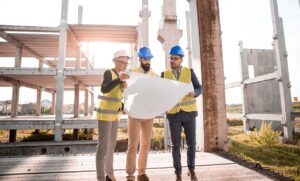
Top 6 Smart Building Practices for Greener, Sustainable Structures
As the need to protect the environment grows, more builders are adapting their work practices. Today, there’s a strong push to build places that use fewer natural resources, create less waste, and support cleaner living. This approach supports both the environment and the well-being of the people who use the space.
Sustainable building focuses on using energy wisely, selecting safer materials, and implementing systems that work more efficiently and last longer. These choices are not just helpful — they are becoming the new normal across many cities and towns.
In the article below, we’ll explore how builders can adopt simple, innovative methods to create spaces that are safer, cleaner, and more sustainable for the future.
-
Plan the Location to Save Power
Choosing the right spot is one of the first steps. It may seem simple, but where a building is located and how it faces can save a significant amount of energy. When placed correctly, windows can bring in sunlight and warmth during the day. This lowers the need for lights and heat.
Wind and shade can also help keep rooms cool. Trees and natural features nearby can offer extra comfort if utilized effectively. Good planning also helps with water flow and less damage to nearby land. These steps at the start don’t cost much, but they make a big difference later. A well-designed setup reduces waste and lowers costs over the property’s lifespan.
-
Pick Better Materials That Last
Using better products during work can make a real difference. Today, many people opt for recycled parts, reused wood, or non-toxic paints. They save waste and keep the air in and free of contaminants. Some of them prolong the life of the walls and floors. That means less repair down the road and fewer new parts to purchase. Most materials today have labels or indicators indicating that they are green compliant.
Picking these helps a project meet safety and energy goals. They are not just good for nature — they also support better health for the people who use the space. Strong and clean parts are key to brilliant, long-lasting results in new places.
-
Use Steel Frames the Smart Way
Reliable structural frameworks are vital to modern construction. Steel erection supports large spans, reduces framing time, and ensures long-term strength — all while allowing more design flexibility. It’s a preferred choice for sustainable projects where speed, accuracy, and material efficiency matter.
By looking at the steel erection history, we can see how the process has evolved from heavy manual assembly to today’s safer, faster, and more precise methods. Modern crews now use engineered components, advanced lifting tools, and detailed planning to minimize material waste and improve safety on-site. These improvements make steel erection a key player in building greener, more efficient structures.
-
Add Systems That Work by Themselves
New tools can help places operate independently. Smart systems adjust the lights, air, and heat as needed. This means people don’t have to do much to keep rooms just right. Sensors can tell if someone is in a room or if the air is too hot or cold.
Then they change the settings to match. These tools help save power every day. They also cut bills and make places calmer and easier to use. From schools to shops, smart controls are becoming common. When added during the early steps, they blend in well and work more effectively. This is a smart move for long-term care and use.
-
Use Less Water With Better Fixtures
Saving water is just as key as saving power. New taps and toilets now use less water with each use. Some tools even reuse clean water from sinks to water plants or flush again. Smart tools can also detect leaks early, allowing them to be fixed quickly. This stops bigger problems and helps lower water bills.
When builders use these in the early stage, it’s easy to set up. Over time, the savings add up. Less waste also means less strain on pipes and systems. Good water management benefits both the people living there and the surrounding area.
-
Build With Ready-Made Parts
Making parts off-site and bringing them in is now a smart trend. These pieces are made in clean, steady places where the work is fast and safe. Less trash is generated on the job site, which helps keep the area clean and reduces harm to the surrounding land.
Once the parts arrive, they fit together with less work. This saves time and reduces the number of tools and personnel required. It also reduces noise and dust. Many builders use this method for homes, offices, and even schools. It is a straightforward way to build faster, better, and cleaner.
Final Thoughts
Making better choices at each step can significantly shape the safety, cleanliness, and overall strength of a space. From site setup to water and frame usage, each practice helps reduce waste and improve the efficiency of operations. Innovative methods don’t just help the planet — they also give real value to those who live or work in these spaces. Moving forward, these ideas will serve as the foundation for every successful project.